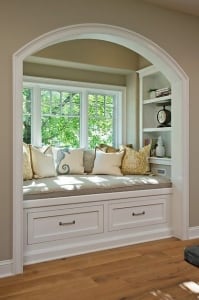
Bay windows date back to medieval times, where they could be found in castles permitting spectacular views. Later on a bay window appeared in the Georgian period of the 18th century and was then very popular in English countryside homes.
Being a significant part of Victorian architecture, where it was in a high demand, a bay window kept on gaining its popularity and eventually stopped belonging to just Victorian style homes, and nowadays many architects include them in their various residential projects.
Many home owners appreciate the versatility of bay windows, including additional space and abundance of light they deliver and therefore consider them a worthy investment, which raises the house value.
Bay windows always project from the main wall and usually consist of a fixed central window flanked by two operating casements or, sometimes, double hungs. Sometimes there can be more than one window on each side of the fixed casement. The vertical posts between the bay parts are called mullion posts.
Bay windows are presented in the shape of a square, polygon, semicircle, or even a circle. 30, 45, 135 and 150 degree angles are the most commonly chosen ones for building bay windows. Let’s take a closer look at all the bay window types and see how they differ.
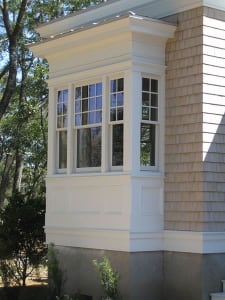
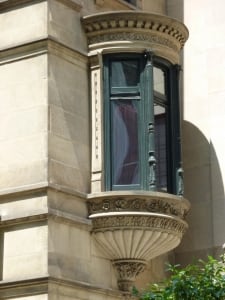
Another variation of a bay window is called a bow window. It forms an elegant curved line of a semicircle and has at least 4 windows in it.
Bay windows can also be made in a circle shape for an increased dramatic effect to complement the overall architectural appearance of the building. Circle bay windows are an excellent place to add a round bench and make the extra space even more cozy and inviting.

If you consider installing a bay window but are hesitant to decide which type to choose (a bay or a bow), think about what architectural style your home belongs to. You may want to go with a bay if it is more of a modern style home since a bay window offers more angular structure, while a bow window creates a graceful contour suitable for traditional residences.
If your goal is to allow more light in the room, a bow window consisting of multiple panes may be a preferential option. Bay windows, however, offer more floor space than bow windows since they protrude more from the wall.
Bay windows provide you with an excellent opportunity to improve both exterior and interior appearance of you house and add to the value of it. You just have to make sure you contact a reputed supplier who can build quality bay windows in custom sizes and angles so you can install what suits your house the best.

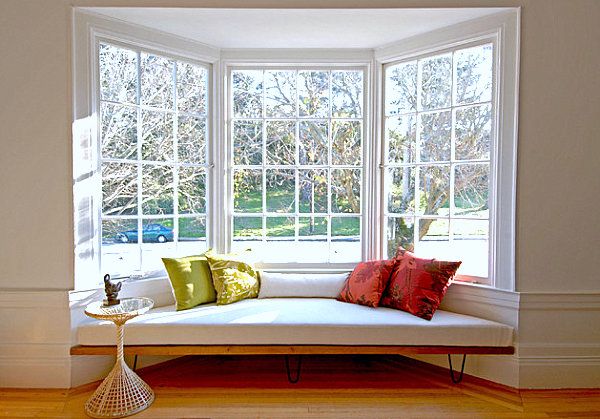
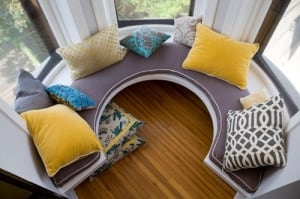
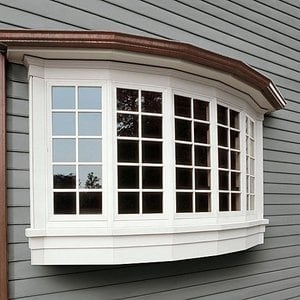
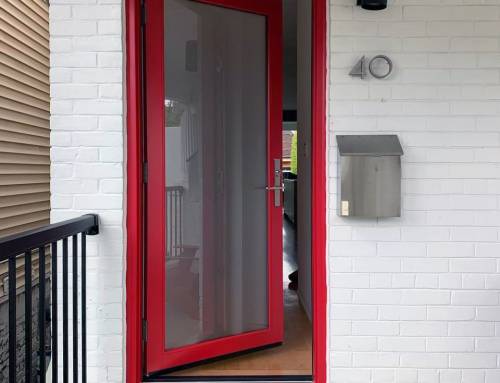
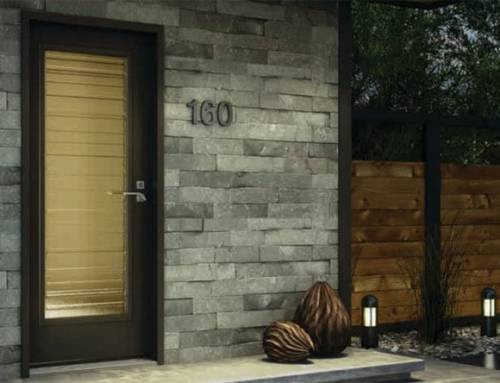
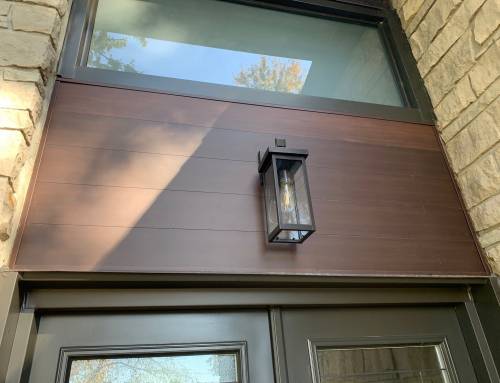

Leave A Comment
You must be logged in to post a comment.